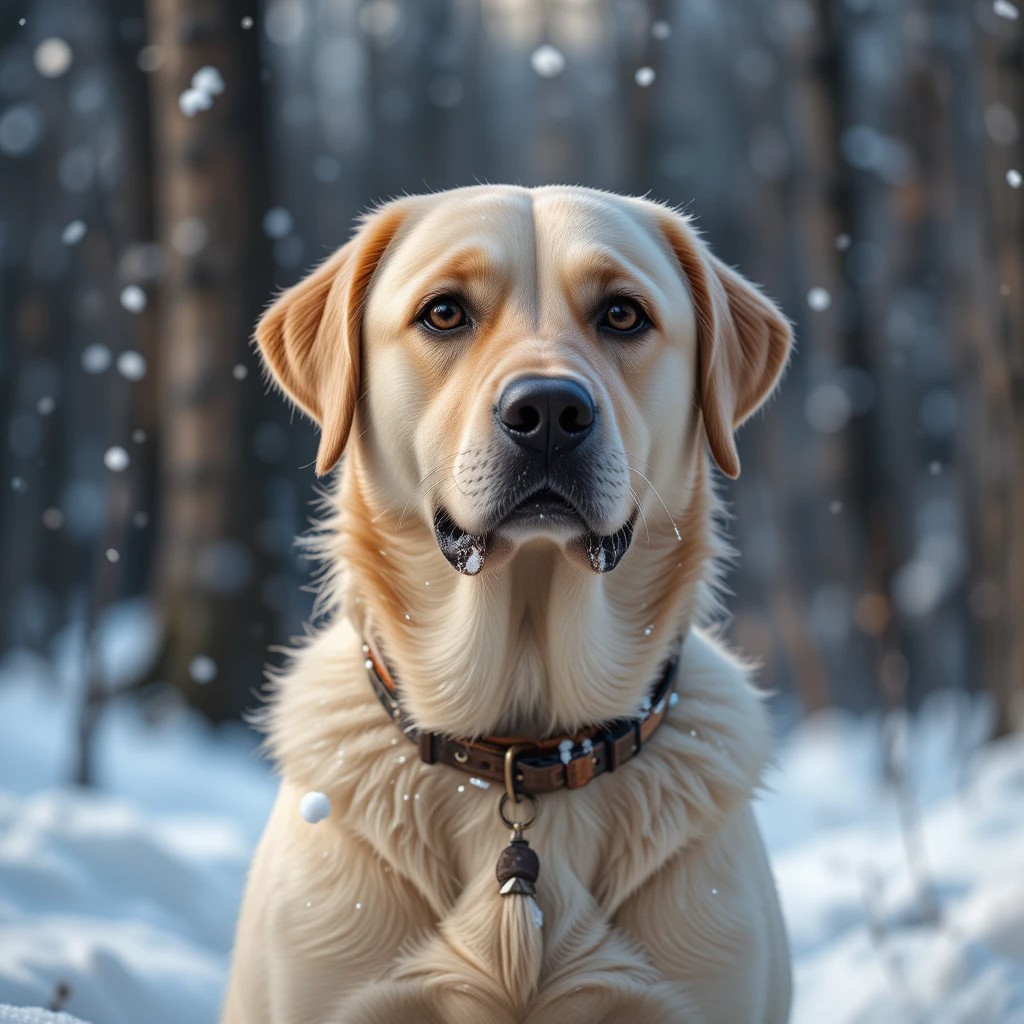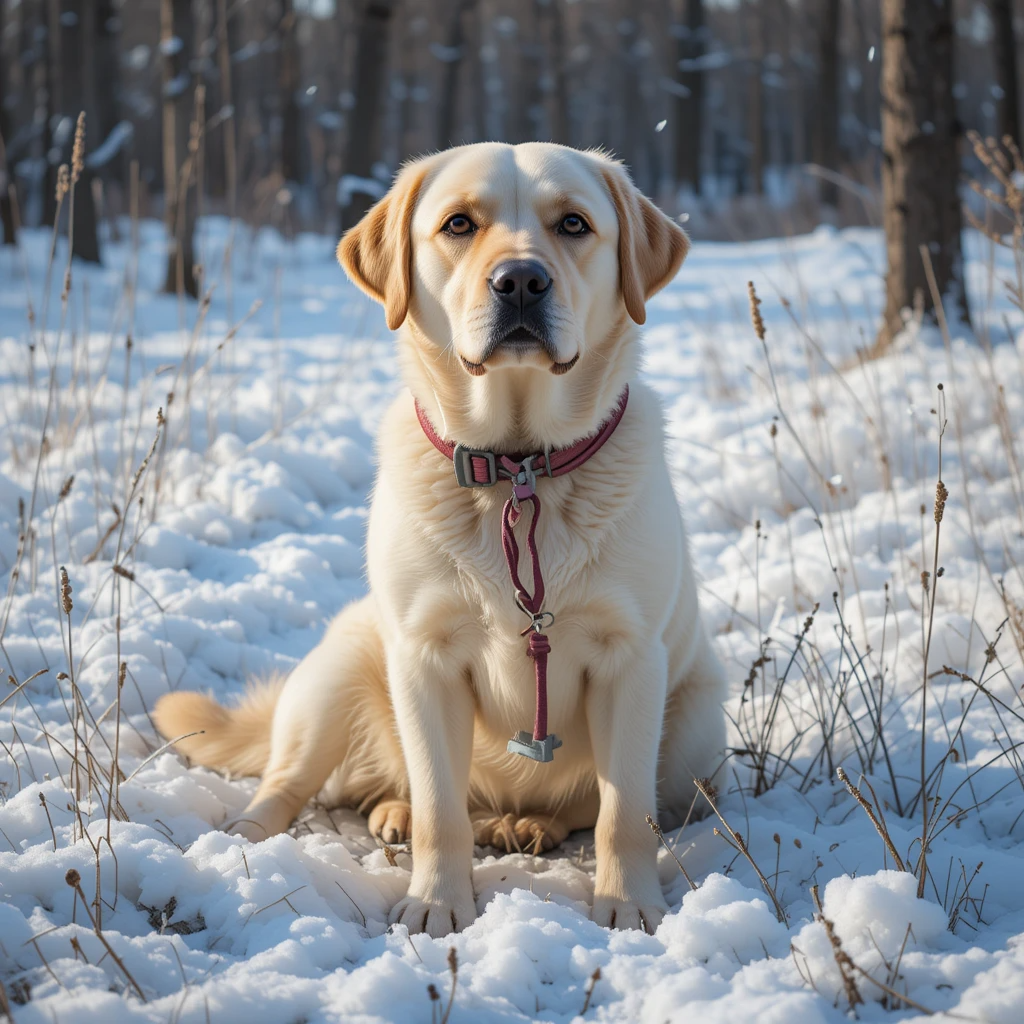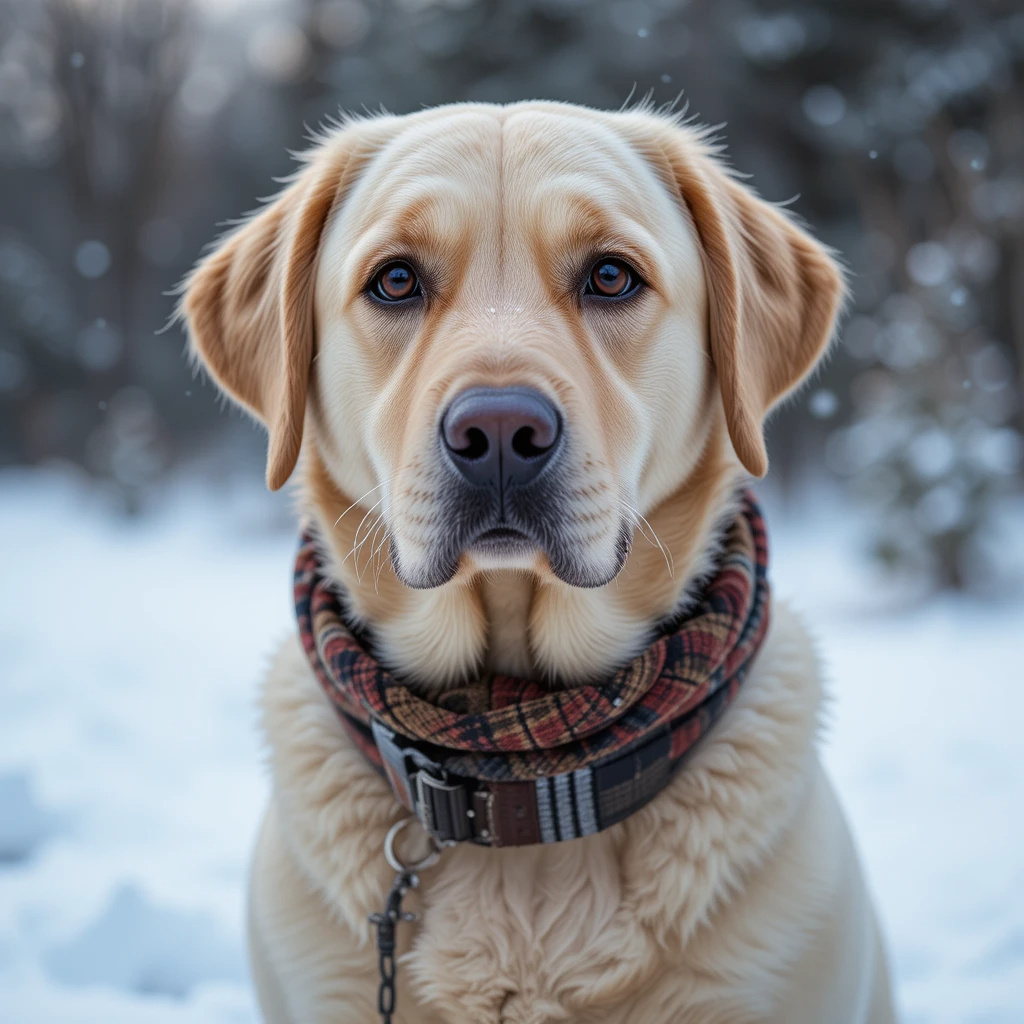Winter is a time for cozy blankets, warm drinks, and Labrador for Winter festive moments—but it also means a change in how we care for our pets. Labradors, known for their friendly and energetic nature, are no exception to the wintertime challenges. While their thick double coat provides some protection, they still need special attention to ensure they’re comfortable, safe, and healthy throughout the colder months. Whether you’re new to Labrador ownership or just looking for a refresher, here’s a comprehensive guide to help you prepare your Labrador for winter.
Table of Contents
1. Understanding Your Labrador’s Coat in Cold Weather
Labradors are famous for their dense, waterproof double coat, which offers some defense against chilly weather. However, despite their natural protection, cold temperatures can still be harsh on their bodies, especially if the coat becomes wet or if they’re outside too long.
While your Labrador’s coat offers insulation, it can’t protect them from everything. In fact, when temperatures drop significantly or when wet conditions prevail, they may struggle to maintain warmth. It’s important to remember that older dogs, puppies, and those with health issues may need additional protection, such as a dog sweater or jacket.
Look out for signs that your Labrador may be too cold, such as shivering, reluctance to go outside, or licking their paws excessively. These are clear indicators that your dog needs more care, and they may need to spend less time outdoors.

2. Create a Warm, Cozy Resting Spot Indoors
In winter, your Labrador’s bed becomes more important than ever. If you’re keeping your dog indoors, ensure they have a warm and comfortable resting space that’s free from drafts. Raised beds with thick blankets or orthopedic cushions are especially useful if your Labrador is older or suffers from joint issues.
For outdoor dogs, the shelter you provide should be insulated and waterproof, with bedding that helps retain heat. Raised off the ground and tucked away from the wind, your dog’s outdoor space should be a safe haven from the elements. Consider using heated pet pads for extra warmth—just be sure to monitor them regularly to ensure they’re safe.
3. Invest in Proper Winter Gear for Your Labrador
Labradors love to play in the snow, but like all dogs, they can suffer in extreme weather. In fact, winter months often mean wet fur, ice-cold paws, and a coat that doesn’t stay as warm when wet.
Investing in a well-fitting dog coat can be a game-changer. Choose one that’s water-resistant, breathable, and easy to put on and off. A dog sweater may also help, especially for dogs with shorter coats or those who seem to get cold more easily.
Dog booties can also make a significant difference, protecting their paws from snow, ice, and harmful salts on the road. Always check their paws after walks for ice balls or salt that could irritate their skin.
4. Adjust Your Labrador’s Exercise Routine
Although it’s colder, your Labrador still needs exercise to stay healthy. However, winter walking requires some adjustments. You don’t want to leave your dog outside for long periods in freezing temperatures, but regular walks, games, and playtime are crucial.
Shorter, more frequent walks are often better than long stretches outdoors, especially if snow or ice are involved. Stick to paths that are clear of ice and avoid rough terrain where slipping might be a concern. Indoor games like fetch or tug-of-war can also help burn off excess energy, especially when the weather outside is particularly harsh.
5. Keep Their Diet Healthy and Balanced
In winter, your Labrador may need more energy to stay warm, especially if they spend a lot of time outdoors. You might notice them eating more or begging for extra snacks. However, it’s important not to overfeed—excess weight can be just as harmful during the winter months as it is during the summer.
Make sure your Labrador is eating a balanced diet that matches their energy expenditure. If they’re more active than usual, you might want to increase their portions slightly. However, always consult with your vet to determine what’s best for your dog’s specific needs.

6. Proper Grooming for Winter Coat Care
Labradors tend to shed year-round, but during winter, grooming is even more important. Keeping their coat clean and dry helps them regulate their temperature better and keeps them comfortable. When their fur gets wet and then freezes, it can create uncomfortable cold spots that affect their overall health.
Regular brushing is essential to prevent matting, especially during periods of snow or rain. You may also want to use a drying towel after your walks to get rid of excess moisture, particularly if your dog has been rolling around in the snow.
Pay attention to their nails and paws as well. Moisture from snow and ice can make their pads more susceptible to cracks, so check their feet regularly for any signs of irritation or injury.
7. Be Aware of Winter Hazards
Winter can pose several dangers to your Labrador, including the risk of poisoning, frostbite, and injuries caused by slippery surfaces. As roads are treated with salt, your dog’s paws may become irritated. Make sure to rinse their paws with lukewarm water after walks, and use a paw balm to protect their pads from the salt.
Antifreeze is another major concern during the winter months. It’s sweet-smelling and can be tempting for pets, but it’s extremely toxic. Keep all antifreeze containers sealed tightly, and ensure there are no spills in areas where your Labrador could access it.
8. Recognize the Signs of Hypothermia or Frostbite
Hypothermia and frostbite can affect your Labrador if they’re exposed to extreme cold for too long. Frostbite typically affects areas such as the ears, tail, and paws. Symptoms to look out for include pale or grey skin, shivering, and a reluctance to move.
If you notice these signs, bring your Labrador inside immediately. Warm them up gradually using blankets and heated pads. Don’t use hot water or a heating source directly on them, as this can cause burns. If symptoms persist or worsen, contact your vet immediately for guidance.
9. Regular Check-ups During Winter
Winter can be harder on older Labradors or dogs with pre-existing conditions. It’s a good idea to have a vet check-up before the cold months set in. Your vet can offer advice on winter-specific care and ensure your Labrador’s health is in top condition.

Final Thought
Winter can be a wonderful season for both you and your Labrador, but it’s important to make sure they’re properly prepared for the challenges it brings. By adjusting their diet, grooming routine, and exercise schedule, and by keeping an eye out for winter hazards, you can ensure your dog stays happy and healthy all season long.

